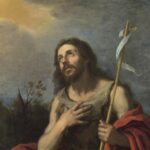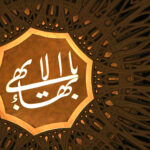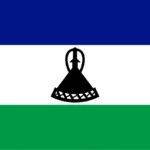
Mandaeism is an ancient religion with roots in Mesopotamia. It’s a fascinating blend of Gnostic, Christian, and Zoroastrian beliefs. Mandaeans, the followers of this religion, emphasize baptism, purity, and respect for nature. While they face numerous challenges, they strive to preserve their unique heritage.
Origins: Mandaeism is believed to have originated in the 1st century CE, a period marked by significant religious and philosophical developments, including the rise of early Christianity and various Gnostic movements. This context fostered a unique religious identity for the Mandaeans, who sought to differentiate themselves from both emerging Christian doctrines and Jewish traditions. Mandaeism’s roots are often linked to the teachings of John the Baptist, which may reflect a syncretism of earlier religious beliefs and practices prevalent in the region.
Language: The Mandaic language, a dialect of Aramaic, serves as the liturgical and literary language of the Mandaeans. It is utilized in their sacred texts, prayers, and rituals, preserving ancient linguistic features that offer insights into the historical context of the region. Mandaic is not only a means of communication but also embodies the culture and identity of the Mandaean community, with its script and vocabulary reflecting their religious concepts and practices.
Holy Books: The “Ginza Rabba,” the primary sacred text of Mandaeism, is a comprehensive compilation of hymns, prayers, and teachings that guide the spiritual life of Mandaeans. This text is central to their worship and rituals, containing cosmological narratives, ethical instructions, and theological reflections that shape their understanding of the divine and the universe. The Ginza Rabba’s poetic language and rich symbolism illustrate the Mandaeans’ reverence for knowledge and spiritual enlightenment.
God: Mandaeans believe in a single, transcendent God known as “Hayyi Rabbi,” meaning “the Great Life.” This concept emphasizes the divine’s role as the source of all life and existence, reflecting a dualistic worldview where the spiritual realm is distinct from the material world. Hayyi Rabbi is often associated with qualities such as wisdom, purity, and eternal life, which are central to Mandaean beliefs and practices, guiding adherents in their quest for spiritual knowledge and connection with the divine.
Baptism: Baptism, or “Masbuta,” is a central ritual in Mandaeism, symbolizing spiritual purification and renewal. This rite is performed in flowing water, reflecting the belief in water as a sacred element that embodies life and cleansing. The act of baptism is not merely a ritualistic practice; it signifies the Mandaean’s commitment to their faith, their community, and their pursuit of spiritual enlightenment. The ritual is often conducted by a qualified religious leader and involves specific prayers and invocations.
Sacred Water: In Mandaeism, water holds profound significance, regarded as a symbol of life, purity, and spiritual renewal. The importance of flowing water is highlighted in their baptismal practices, where the act of immersion represents a connection to the divine and a cleansing of sins. Water is also used in various rituals and ceremonies, reinforcing its role as a vital element in Mandaean spirituality. This reverence for water underscores the community’s belief in the interconnectedness of all life.
Religious Leaders: Mandaean religious leaders, known as “Rabbis” or “Ras,” play a crucial role in guiding the community through spiritual teachings and performing essential rituals. These leaders undergo extensive training, often lasting several years, to master the intricate rituals, prayers, and theological concepts of Mandaeism. Their authority is derived from their knowledge and ability to connect the community with the divine, ensuring the preservation of Mandaean traditions and practices.
Population: The estimated global population of Mandaeans is around 60,000, primarily concentrated in Iraq and Iran. This small community has faced significant challenges, including persecution and displacement, particularly in the wake of political upheaval and conflict in the region. The decline in their population is a result of both emigration and the difficulties faced by those who remain, leading to concerns about the preservation of their cultural and religious identity.
Persecution: Mandaeans have faced significant persecution, especially in Iraq, where they have been targeted due to their distinct religious beliefs and practices. This persecution has led to violence, discrimination, and social marginalization, contributing to a decline in their population and prompting many to flee their homelands. The challenges faced by Mandaeans highlight the broader issues of religious tolerance and the protection of minority communities in conflict zones.
Symbol: The Mandaean symbol prominently features a fish, which represents water and life, holding significant importance in their beliefs. The fish symbolizes the act of baptism and the spiritual rebirth associated with it, reflecting the Mandaeans’ deep connection to water as a source of purity and renewal. This symbol encapsulates key aspects of Mandaean theology, emphasizing the intertwined nature of life, spirituality, and
Festivals: The Mandaeans celebrate several important festivals, with the “Mandaean New Year,” known as “Hawram,” being one of the most significant. This festival typically occurs in the spring and marks the renewal of life and the beginning of a new cycle. Hawram involves various rituals, prayers, and communal gatherings, emphasizing the themes of purification and spiritual rebirth. It serves as a time for Mandaeans to reflect on their beliefs, connect with their community, and celebrate their cultural heritage.
Diet: Mandaeans adhere to a strict vegetarian diet, which they believe is essential for maintaining spiritual purity and aligning with their religious principles. This dietary restriction is rooted in their teachings that emphasize non-violence and respect for all living beings. By avoiding meat, Mandaeans seek to cultivate a sense of compassion and mindfulness in their daily lives, reinforcing their commitment to spiritual growth and ethical living.
Clergy: Mandaean clergy undergo extensive training, often lasting several years, to learn the rituals, teachings, and sacred texts of their faith. This rigorous education equips them with the knowledge necessary to perform religious ceremonies, lead the community, and interpret Mandaean teachings. The clergy’s role is vital in preserving the traditions and practices of Mandaeism, ensuring that the community remains connected to its spiritual roots and cultural heritage.
Art: Mandaean art is characterized by intricate designs and symbols, particularly in their manuscripts and religious texts. This art often reflects the community’s beliefs, depicting cosmological themes and spiritual concepts. The craftsmanship involved in creating Mandaean art showcases the importance of aesthetics in their religious practices, serving as a medium for expressing their faith and preserving their cultural identity.
Holy Sites: The “Jordan River” is considered a sacred site for Mandaeans, as it is associated with the baptism of Jesus and holds historical significance in their religious tradition. The river symbolizes spiritual purification and renewal, making it a focal point for Mandaean rituals and pilgrimages. This connection to the Jordan River underscores the importance of water in Mandaean beliefs and practices, reinforcing their reverence for this natural element.
Ritual Objects: Mandaeans utilize specific ritual objects, such as the “Masbuta,” during baptism ceremonies and other religious rituals. These objects are imbued with spiritual significance and are essential for performing the rites according to Mandaean tradition. The careful handling and use of these ritual items reflect the community’s deep respect for their religious practices and the importance of maintaining the integrity of their rituals.
Death Rituals: Mandaeans have unique death rituals that emphasize the importance of the afterlife and the purification of the body. These rituals include a ceremonial washing of the deceased, reflecting their belief in the sanctity of the body and the need for spiritual cleansing. The focus on the afterlife in Mandaean death rituals highlights their understanding of existence as a journey that transcends physical life, reinforcing their commitment to spiritual continuity.
Historical Figures: John the Baptist is a significant figure in Mandaeism, regarded as a prophet and a key figure in their teachings. Mandaeans believe that John the Baptist serves as a model for spiritual purity and the practice of baptism, which is central to their faith. His teachings and actions are often referenced in Mandaean texts, illustrating the community’s connection to this historical figure and their interpretation of his role in the spiritual landscape of their tradition.
Scriptural Texts: In addition to the “Ginza Rabba,” Mandaeans possess other important texts, such as the “Book of John” and the “Book of Adam.” These texts provide additional insights into Mandaean theology, cosmology, and ethics, enriching their religious literature. The diversity of Mandaean scriptural texts reflects the complexity of their beliefs and the importance of written tradition in preserving their spiritual heritage.
Community Structure: Mandaean communities are often organized around a central temple, known as a “Mandi,” where rituals and communal activities take place. The Mandi serves as a spiritual hub, fostering a sense of belonging and identity among Mandaeans. This communal structure is vital for maintaining their cultural and religious practices, allowing members to gather for worship, celebrations, and the transmission of knowledge across generations.
Mandaeism and Gnosticism: Mandaeism shares several similarities with Gnosticism, particularly in its dualistic worldview and emphasis on knowledge. Both traditions view the material world as flawed or corrupt, contrasting it with a higher spiritual reality. Mandaeans believe in the pursuit of gnosis, or spiritual knowledge, which is essential for achieving salvation and understanding the divine. This focus on enlightenment and the quest for truth reflects the influence of Gnostic thought on Mandaean beliefs and practices.
Modern Challenges: Mandaeans have faced numerous challenges in preserving their culture and language, especially in diaspora communities. The persecution and displacement experienced in their homelands have led to a decline in the use of the Mandaic language and traditional practices. Efforts to maintain their identity in new environments often encounter obstacles, such as assimilation pressures and a lack of resources for cultural education. These challenges underscore the importance of community solidarity and initiatives aimed at preserving Mandaean heritage.
Migration: Many Mandaeans have migrated to countries such as Australia, the United States, and Canada due to persecution in their homelands. This migration has resulted in the establishment of diaspora communities that strive to maintain their religious and cultural identity while adapting to new environments. The experiences of Mandaeans in the diaspora highlight the resilience of their community as they navigate the complexities of preserving their traditions and fostering a sense of belonging in a foreign context.
Cultural Heritage: Mandaeans possess a rich cultural heritage that encompasses music, dance, and storytelling, often reflecting their religious beliefs and community values. These cultural expressions serve as vital means of preserving their identity and passing down traditions to future generations. The integration of art and performance in Mandaean life reinforces the importance of communal gatherings and celebrations, fostering a sense of unity and continuity within the community.
Recognition: Mandaeism is recognized as a distinct religious tradition, separate from Judaism, Christianity, and Islam, with its own unique beliefs and practices. This recognition is essential for the Mandaean community as it affirms their identity and the legitimacy of their faith. It also highlights the importance of understanding and respecting religious diversity in a global context, as Mandaeans continue to advocate for their rights and the preservation of their cultural heritage amidst challenges in the contemporary world.
FAQs About Mandaeism
What is Mandaeism?
Mandaeism is an ancient religion originating in Mesopotamia, with roots dating back to pre-Islamic times. It’s a unique blend of Gnostic, Christian, and Zoroastrian elements. Mandaeans believe in a supreme being, the “Great Life,” and a dualistic worldview where the world is divided into light and darkness. They emphasize baptism, purity, and the importance of living in harmony with nature.
Who are the Mandaeans?
Mandaeans are the followers of Mandaeism. Historically, they have primarily lived in areas around the Tigris and Euphrates rivers, particularly in Iraq and Iran. Due to persecution and conflict, many Mandaeans have been forced to migrate, with significant populations now residing in countries like Australia, Sweden, the Netherlands, and the United States.
What are the core beliefs of Mandaeism?
Mandaeism is centered around several core beliefs:
- Dualism: The world is divided into two opposing principles: light (good) and darkness (evil).
- Baptism: Regular baptism is essential for spiritual purity and cleansing.
- Gnosticism: Knowledge (gnosis) is crucial for spiritual liberation.
- John the Baptist: Considered the last and greatest prophet.
- Ancestors: Great respect is given to Adam, Seth, Noah, and other biblical figures as their ancestors.
- Nature: Mandaeans have a deep reverence for nature and water bodies.
- Vegetarianism: Many Mandaeans follow a vegetarian or pescatarian diet.
What are the sacred texts of Mandaeism?
The primary sacred text of Mandaeism is the Ginza Rabba, which translates to “The Great Treasure.” It contains hymns, prayers, and theological teachings. Other important texts include the Qolasta (hymns) and the Drasa (teachings).
What are Mandaean rituals and practices?
Mandaean rituals are centered around baptism and purification. Key rituals include:
- Masbuta: A full body immersion in a natural water body.
- Tamasha: A ritual purification using water.
- Rishama: A ritual cleansing with sesame oil.
- Masiqta: A ritual to guide the soul of the deceased to the World of Light.
Mandaeans also observe dietary restrictions, with many adhering to a vegetarian or pescatarian diet. Prayer and meditation are essential parts of their spiritual practice.
What is the Mandaean view of other religions?
Mandaeans generally respect other religions but maintain their distinct identity. They believe that their path is the true path to enlightenment and salvation.
How has Mandaeism been affected by conflict and persecution?
Mandaeans have faced significant challenges due to conflict and persecution, particularly in Iraq. Many Mandaeans have been forced to flee their homes, leading to a diaspora community. Despite these challenges, efforts are being made to preserve Mandaean culture and heritage.
What is the future of Mandaeism?
The future of Mandaeism is uncertain due to the ongoing challenges faced by the community. However, there is a growing awareness of Mandaeism, and efforts are being made to preserve the religion and culture for future generations.









